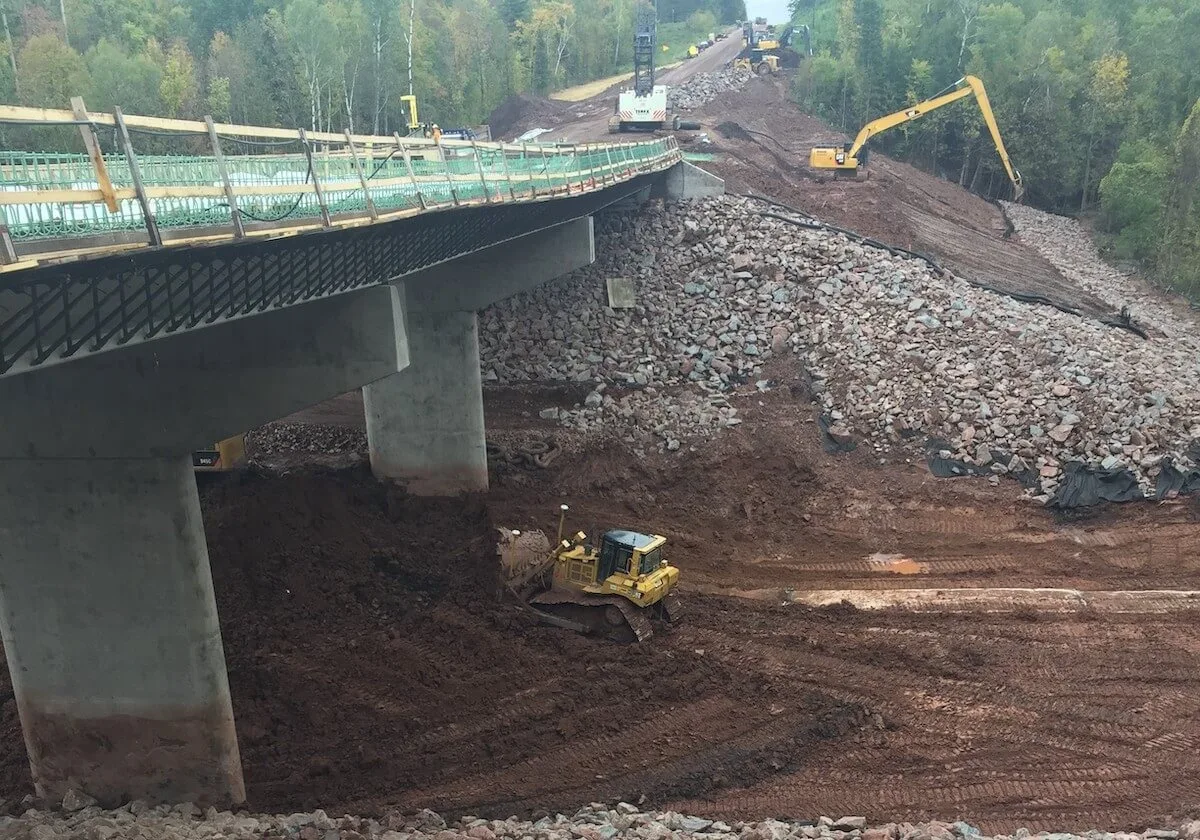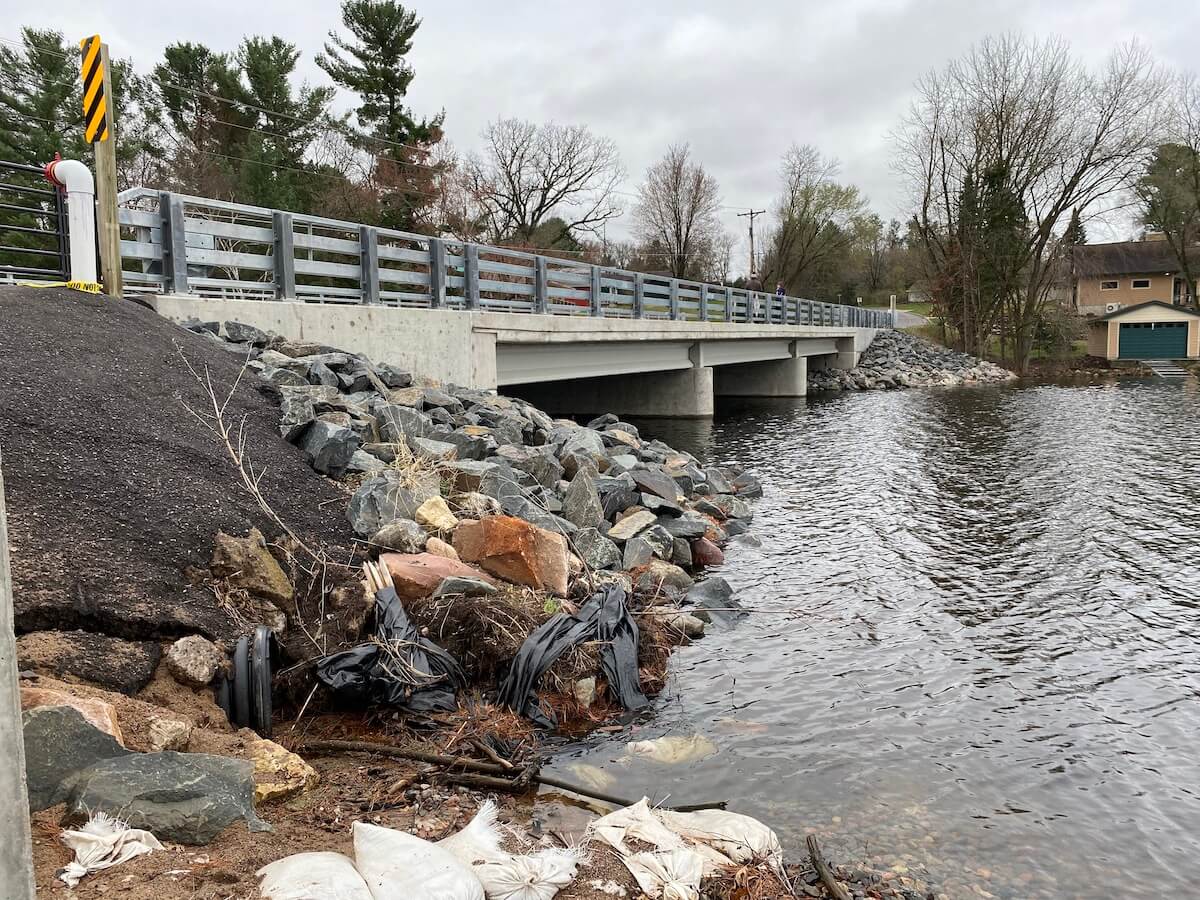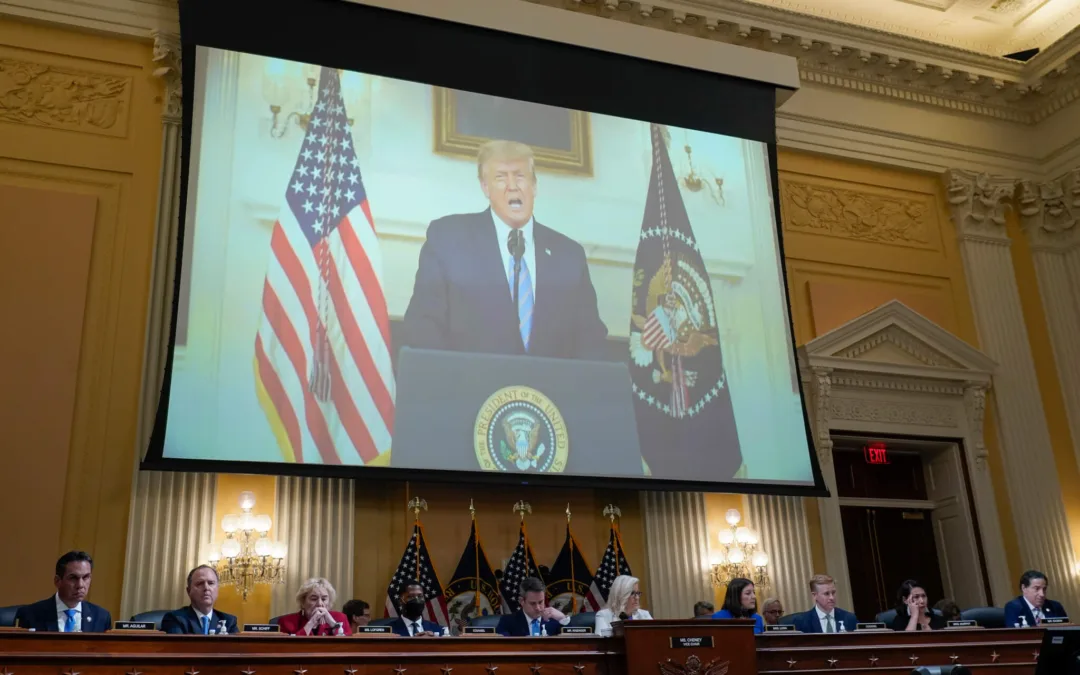
#image_title
#image_title
Available funding has lagged the cost for repairs and replacements, leaving needs unmet.
When construction on State Highway 13 in Ashland County rerouted drivers last August, the detour led along County Highway GG.
But there was one big problem: Transportation officials discovered two damaged girders on a bridge on GG that made the structure unsafe for large trucks to cross.
What should have been a relatively short detour turned into as much as two hours of additional travel time as farmers, log truck drivers, and others with large vehicles had to take yet another detour on spaced-out rural roads.
“Ashland County is a poor place financially, and one of the things that suffers is roads and bridges,” Ashland County Highway Commissioner Matt Erickson said. “There just isn’t enough funding to do what we need to do.”

That would change if President Joe Biden’s proposed infrastructure bill is enacted into law. The $2 trillion initiative includes $621 billion for transportation projects such as bridges and roads along funding for a broad array of initiatives such as schools and housing.
Congressional Republicans have offered a counterproposal, a much-smaller $568 billion plan that would restrict infrastructure spending to more traditional projects such as roads and bridges, broadband, and rail.
What infrastructure measures ultimately receive the approval of Congress remains uncertain. Given the need for repairs, local transportation officials in Wisconsin said additional state and federal assistance is much-needed and welcome.
“For sure we would support additional funding,” Erickson said, noting his department is prioritizing bridge and roads projects they would complete if Wisconsin receives federal infrastructure dollars. “Funding definitely has lagged the need for a long time now.”
According to state Department of Transportation (DOT) statistics, of 14,253 bridges in Wisconsin, 980 are currently rated as structurally deficient, meaning one or more bridge elements is significantly deteriorated.
That figure is down slightly from five years ago, when it totaled 1,017, in large part because state lawmakers, at the urging of Gov. Tony Evers, significantly boosted transportation aids as part of the 2019-21 state budget, increasing that figure to $6.6 billion. He proposes spending $6.4 billion in his 2021-23 budget.
“In Gov. Evers’ last budget, he secured a historic level of new investment in fixing our roads, bridges, and other infrastructure,” said Kristin McHugh, director of the DOT’s Office of Public Affairs.
Needs Outpace Funding
However, that increase isn’t enough to make up for overdue repairs to bridges and roads and keep up with new needs, local transportation officials told UpNorthNews. For many, their list of repairs far outpaces available funding for that work, leaving more bridges needing weight restrictions or replacement.
A 2019 report by the American Road and Transportation Builders Association found 1,955 bridges in Wisconsin are in need of improvements, work the organization estimates will cost $1.4 billion. Continued delays to those repairs will only increase that cost, the report states.
The organization’s Report Card for America’s Infrastructure gives Wisconsin a grade of C for its overall infrastructure and a C+ for its bridges.
In many places, county government officials have borrowed money outside of tax levy limits to shore up bridges and roads in need of fixing. For example, Eau Claire County has spent millions in recent years on road and bridge repairs after ranking near the bottom of the state in road conditions.
In Bayfield County, officials are borrowing $1.5 million annually for road and bridge maintenance on 172 miles of roads there. Studies show the county should repair between seven and nine miles of roads annually, but for many years funding allowed fixes to only two or three miles, said Paul Johanik, Bayfield County highway commissioner.
“We didn’t have the money for the maintenance we needed, and over time the roads had gotten pretty rough,” he said.
Weight restrictions and closures of bridges are particularly common in western Wisconsin. In 2018 more than 75% of bridges impacted by newly imposed weight limits related to heavy vehicles were in that part of the state, with a high of 18 such bridges in Trempealeau County.
With the vast majority of Wisconsin bridges located in rural areas, the condition of those structures has a significant, adverse impact on farmers, said Tommy Enright, a spokesman for Wisconsin Farmers Union and a farmer in Portage County.
“Good bridges are crucial infrastructure for agriculture and rural communities,” Enright said. “When a bridge is closed or has weight restrictions due to poor condition, it can add many miles and time to a farm’s operations. This affects their bottom lines in terms of wages and fuel costs, as well as produces more emissions, which can have an environmental impact.”
Farmers, logging operators and other businesses using heavy equipment face significant added travel times and related business costs when bridges are shut down or have weight restrictions in their counties, Erickson and Johanik said. Heavy storms that caused significant flooding and washouts of bridges and roads, including US 2 and State Highway 13 in 2016 and 2018, added as many as several hours to trips for some, they said.
For instance, when portions of both highways were shut down for reconstruction, the 40-minute drive from Ashland to Hurley took as long as 4 ½-hours because of lengthy detours.
“It can be a major inconvenience to people when we have problems with our bridges,” Erickson said.

Chippewa County motorists faced increased travel times when the Paint Creek Bridge near Lake Wissota partially collapsed in May 2018. After it was repaired, the bridge became part of a detour route for fixes to a nearby bridge along County Highway X.
Such reroutes are unavoidable when bridge repairs are needed, but reducing the number of necessary upgrades and weight restrictions will be possible only with additional funding, local transportation officials said. With local government spending and borrowing capacity restricted, increased state and federal aid will be necessary for improved bridge maintenance, they said.
“Things have gotten better the past couple years, but absolutely we need more funding if we’re going to keep up with maintenance,” Johanik said. “Any money we get from the federal level or the state level, we can use it.”
Politics

‘Radical’ Republican proposals threaten bipartisan farm bill, USDA Secretary says
In an appearance before the North American Agricultural Journalists last week, United States Department of Agriculture (USDA) Secretary Tom Vilsack...

New Biden rule protects privacy of women seeking abortions
Under the new rules, state officials and law enforcement cannot obtain medical records related to lawful reproductive health care with the goal of...
Local News

Readers Poll: Top Bowling Alleys in Wisconsin
Looking for the best bowling in Wisconsin? Look no further! Our readers have spoken in our recent poll, and we have the inside scoop on the top...

8 Wisconsin restaurants Top Chef judges are raving about
Top Chef’s 21st season is all about Wisconsin, and on-screen, it’s already apparent that the judges feel right at home here. But, while filming in...


